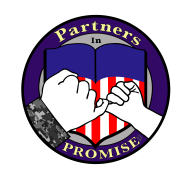
Transitioning from Active Duty
| EFMP Stories, Featured Article, Transitions
Transitioning from active duty required thorough research and diligence to ensure readiness for the next stage of my family’s life. Despite the challenges of military life – with deployments, late nights, and missed moments – it strengthened our bonds. However, feeling a different calling and desiring stability for my family prompted my departure after a decade as an officer. Leaving involved considering my previous education, our sons’ schooling, relocation, healthcare, and employment change. My foremost concern was the impact on my family’s life, deeply intertwined with my service.
Transitioning with Children in Special Education
I have two sons with my wife, who are seven and five years old. My oldest son was diagnosed with Autism at my last duty station. The local school board ran the previous duty station I had been at. It was a nightmarish experience trying to get accommodation for my son due to the school’s severely outdated ideas about Autism and how to accommodate it. Things changed for the better once we left and arrived at Fort Moore. The Department of Defense Education Activity (DoDEA) school he now attends understands and has worked with us as parents to address the needs of both my boys. My oldest has never been better and is thriving in school. The success, quality of education, and benefits my family received only made my decision to transition from active duty more difficult.
Seamless Education Transition: Supporting Your Children’s Academic Success
The level of care my boys received at our school in Fort Moore entirely addressed my concerns about how to transition their education best. We had regular Individualized Education Program (IEP) meetings with their teachers and school. We ensured that my sons had the documentation and ongoing support necessary to allow the next school we plan for them to attend to thrive by addressing their education.
Transitioning from Active Duty
I didn’t keep my intentions a secret from my leadership. The Chain of Command and I had conversations on more than one occasion. We discussed how they could help me and how I could help the organization as I left. I ensured my leadership knew of my Soldier for Life Transition Assistance Program (SFL-TAP) and the classes I had to attend. I paid attention to SFL-TAP and took advantage of its resources. My most significant benefit was the Army’s Skillbridge and Career Skills Program (CSP), which helps soldiers transition into civilian internships and employment during the last 120 days of service.
Skillbridge Program: Transitioning to Tech Careers with Ease
Naturally, employment is the elephant in the room. I wanted to pursue a tech role, but my previous education needed to align with that career path. Learning about the Skillbridge program, I discussed my desire to attend as early as possible with my leadership. I received approval for a tech-based internship, and I envision a promising career ahead of me in my desired field. It also allowed me more flexibility in planning and executing my transition.
Transition Planning: Leveraging Post Resources & Reservist Options
I often visited the S1 for help with paperwork and processes. Still, I also sought information at the post level on how to transition myself and the paperwork and timelines needed. I also talked with the Post Reserve Office about the possibility of being a reservist. This could help me retain some benefits, significantly reducing the family’s insurance cost. I spoke with my post transportation office early to ensure I knew my paperwork, options for moving my family to our civilian home of record, and the associated timelines.
Tips for Transitioning from Active Duty
Several things must be addressed in a transition for it to go smoothly:
- Don’t keep it a secret from your leadership. Have a conversation with your approving authority on more than one occasion to best transition the organization and yourself.
- Be active in finding information. My unit’s Human Resources, or “S1,” did a lot of heavy lifting, but sometimes you must be more active in finding the information and process you need to follow when leaving Active duty.
- Medical records and documentation. If you haven’t been seen medically for any conditions you have, no matter how small, make sure you go on sick call and get it documented. It will be essential for the benefits you and your family receive after leaving.
Preparing for Post-Military Life
I know it can be difficult, but understanding what life after the military will be like will help you and your family successfully transition.
About the Author

CPT Nathaniel L. Huff, Jr. (Nate) is a graduate of Georgia Southern University, class of 2013, and a current active-duty Armor Officer in the United States Army, where he has served for over ten years. Nate is an instructor at Ft. Moore and is in the Insource ServiceNow program, working towards certifications in tech as he transitions to civilian and reserve positions. Nate is married to Destiny Huff, Partners in PROMISE’s Social Media Manager, and they share two amazing sons, five and seven years old, one of whom is Autistic. Nate has been stationed at Korea, Ft. Riley, Ft. Johnson (Polk), and Ft. Moore (Benning) and has deployed twice. Nate has received the Meritorious Service Medal, Army Commendation Medal, Order of St. George, and other decorations.





Leave a Reply